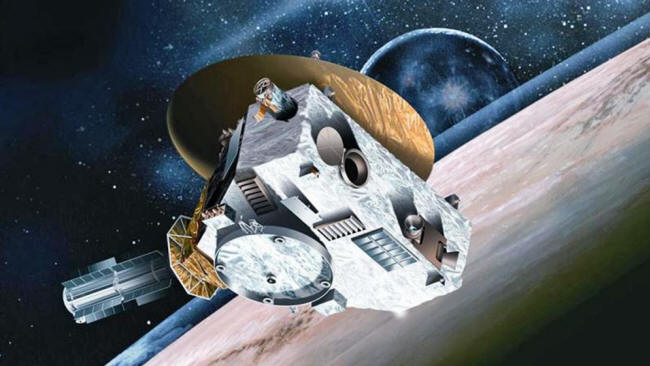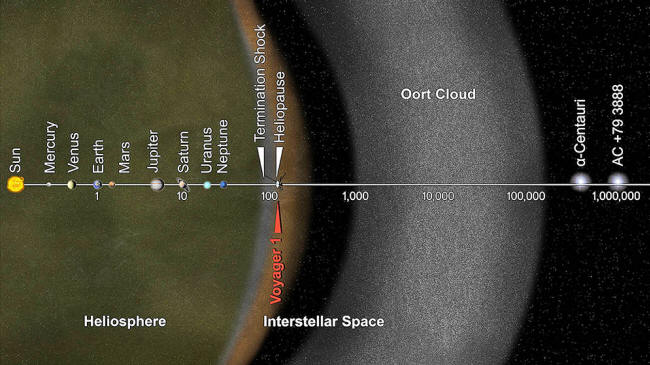|
from Gizmodo Website
It nearly matches the same measurement made by the Voyager mission 30 years ago, and offers more information as to the furthest limits of our Sun's reach.
The Sun's light sends charged particles outward, causing hydrogen particles in the space between planets to release characteristic ultraviolet light.
But eventually, the Sun's
energy should wane, creating a boundary where
interstellar hydrogen piles up at
the edge of the outward pressure caused by the solar wind's energy.
- The boundary of the solar system - This graphic shows the distance from the Oort cloud to the rest of the Solar System and two of the nearest stars measured in astronomical units - AU. The scale is logarithmic, with each specified distance ten times further out than the previous one. Red arrow indicates location of Voyager 1, a space probe that will reach the Oort cloud
in about
300 years.
When they looked into the distance away from the Sun, they saw an added brightness to the signal.
This could be from
hydrogen particles beyond the Solar System interacting with the
furthest reaches of the solar wind, creating what appears to be a
boundary in the distance, according to the paper (The
Lyman-α Sky Background as Observed by New Horizons)
published this week in Geophysical Research Letters.
Recent re-analysis
demonstrated that Voyager's scientists probably overestimated the
signal's strength. But once the Voyager data was corrected, New
Horizon's results looked almost exactly the same.
Scientists plan to
observe the signal perhaps twice a year, according to the paper.
It will still take until the late 2030s before New Horizons reaches Voyager's distance today.
We'll likely be dead
before it truly leaves the influence of our Sun.
|



